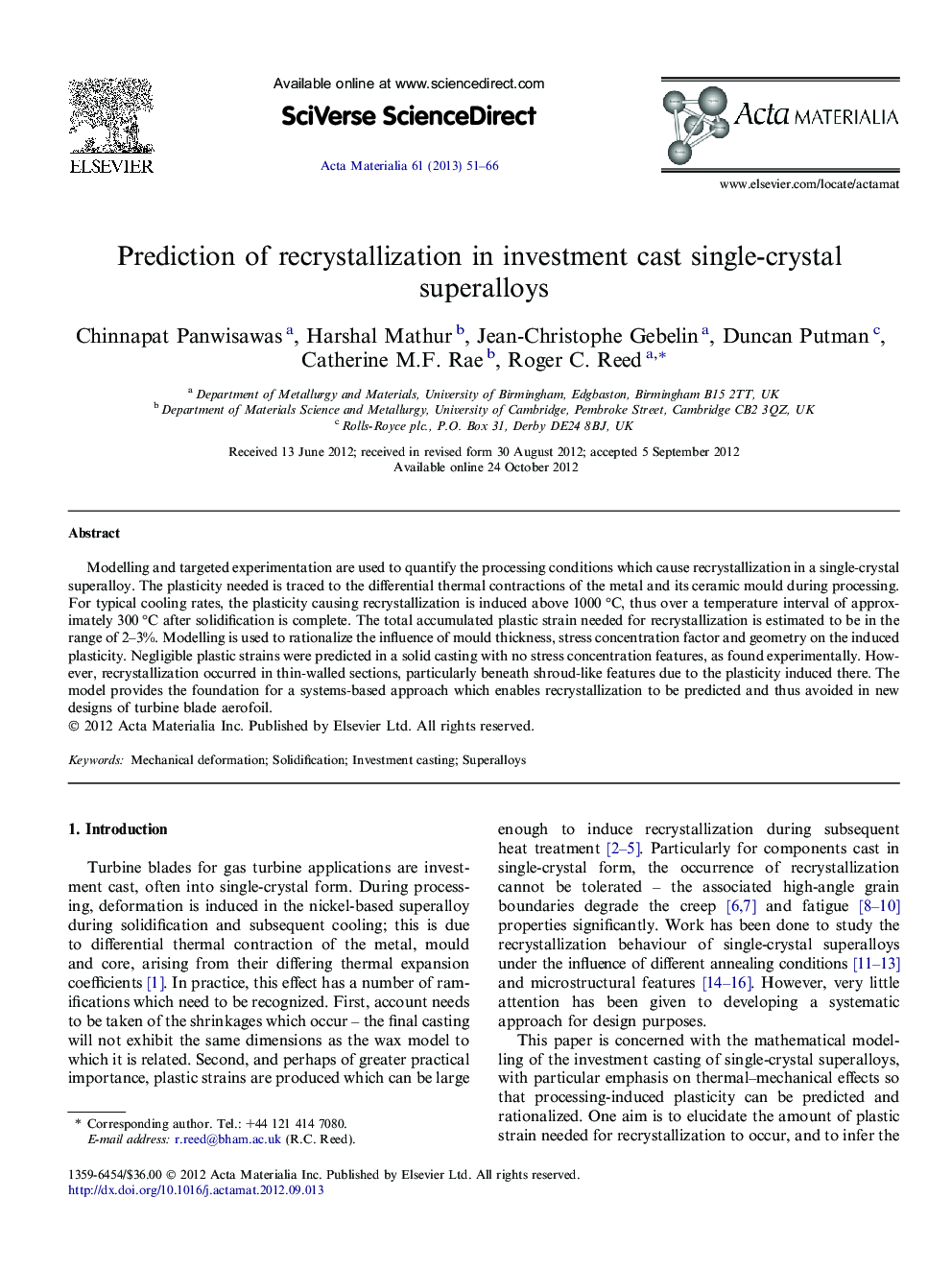| Article ID | Journal | Published Year | Pages | File Type |
|---|---|---|---|---|
| 10620307 | Acta Materialia | 2013 | 16 Pages |
Abstract
Modelling and targeted experimentation are used to quantify the processing conditions which cause recrystallization in a single-crystal superalloy. The plasticity needed is traced to the differential thermal contractions of the metal and its ceramic mould during processing. For typical cooling rates, the plasticity causing recrystallization is induced above 1000 °C, thus over a temperature interval of approximately 300 °C after solidification is complete. The total accumulated plastic strain needed for recrystallization is estimated to be in the range of 2-3%. Modelling is used to rationalize the influence of mould thickness, stress concentration factor and geometry on the induced plasticity. Negligible plastic strains were predicted in a solid casting with no stress concentration features, as found experimentally. However, recrystallization occurred in thin-walled sections, particularly beneath shroud-like features due to the plasticity induced there. The model provides the foundation for a systems-based approach which enables recrystallization to be predicted and thus avoided in new designs of turbine blade aerofoil.
Related Topics
Physical Sciences and Engineering
Materials Science
Ceramics and Composites
Authors
Chinnapat Panwisawas, Harshal Mathur, Jean-Christophe Gebelin, Duncan Putman, Catherine M.F. Rae, Roger C. Reed,
